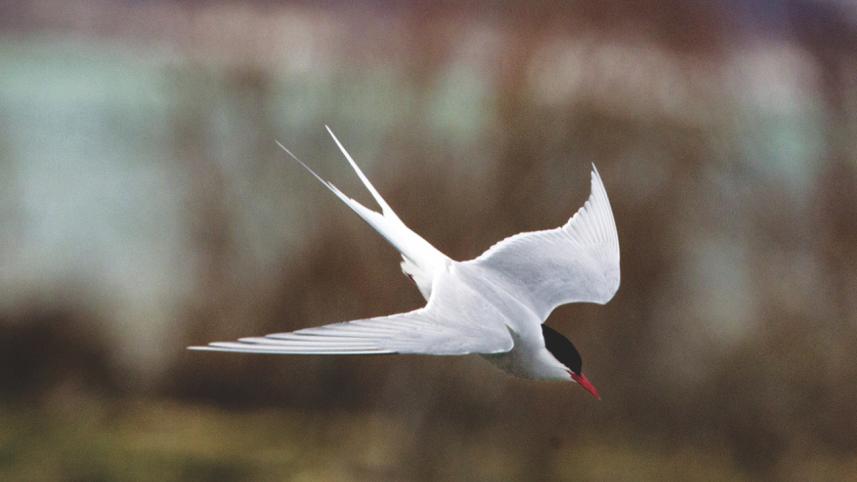The Arctic Tern

I first read about the arctic tern while researching bird migration. It is a special bird because it flies more distance in migration than any other bird. How? In the spring, it breeds in or near the arctic circle, including countries like Greenland and Iceland. As the northern summer wanes, it flies southward all the way to Antarctica, reaching there in October when summer begins in the southern hemisphere. Thus, while the arctic circle suffers through winter, the terns enjoy a warm and bountiful environment in the south. When autumn arrives there in March and April, the terns fly northwards to reach the arctic circle in time for the arrival of summer.
In exchange for its hard work – flying over 25000 miles every year – the arctic tern enjoys perpetual summer.
When I came to visit Iceland last week, I wanted to see this legendary bird. I drove to Lake Myvatn in north-east Iceland and went bird-watching on a cold and windy morning. I quickly found the tern, elegant in white and grey, a black hood stretching from its beak to its nape, its beak a bright red beak. It was hovering like a helicopter over the lake's water, and when it saw a small fish it dived and caught it with a great deal of acrobatic grace.
After a week here, I have seen hundreds of terns. They are busy constructing nests all over this island, getting ready to breed. The nests are lumps of grass, hay and soil on the ground and they are guarded jealously. The athletic bird is exhilarating to watch but difficult to photograph because of its speed. Its small size (about 8 inches, 100-200 grams) can mislead, but watching its life-force I lose all doubt about its capacity for marathon flying.
Arctic terns have been studied extensively. For example, a bird ringed in Greenland in June was found four months later in October in South Africa. During its long flight, it does not fly in a straight line. Instead, while heading towards Antarctica, it flies southeast into Europe from America and then heads south. It does this in order to follow ocean currents rich in food supply. The bird returns year after year to the same place for breeding. With its aggressive personality it snatches food away from slower birds by buzzing over their head to distract and frighten them.
Arctic terns have a relatively long life span of up to 34 years. In their lifetime they fly a distance longer than that from the earth to the moon.
I saw many birds in Iceland, including ducks, swans, geese, songbirds and seabirds. But none enchanted me as much as the arctic tern.
www.facebook.com/tangents.ikabir



 For all latest news, follow The Daily Star's Google News channel.
For all latest news, follow The Daily Star's Google News channel.
Comments